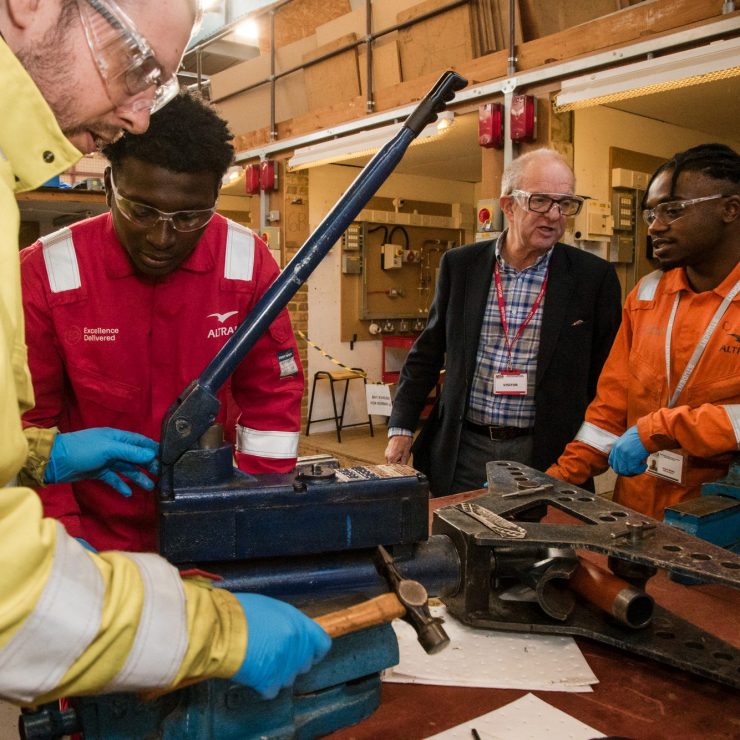In its latest report, published today, the Engineering Construction Industry Training Board (ECITB) has highlighted regional challenges and trends across the engineering construction industry (ECI).
On 14 January, the ECITB published the overarching findings of the latest Workforce Census, which offered a comprehensive overview of the ECI workforce, covering distribution across sectors and regions, demographic trends, hiring challenges and business opportunities over the next three years.
The industry-led skills body has now released its regional report, which provides a more detailed analysis of geographical disparities across England, Scotland and Wales with three national overviews and 16 regional sections. The report also has a section dedicated to the offshore workforce.
Data collected in May and June 2024 from 162 ECI companies, which represent some 74,609 workers across 1,621 locations, was compared with data on each region’s general population to help provide a clearer picture of the industry’s footprint across Great Britain and the unique characteristics and challenges faced by each region.
ECITB Chief Executive Andrew Hockey said: “As the employer-led skills body for the engineering construction industry across Great Britain, it is vital for the ECITB to understand the nuances of our industry in each region to best support the skills needs of our companies both now and in the future.
“These insights will help greatly in our discussions with government and provide the evidence base to underpin our new strategy for 2026-28, which is set to be launched later this year after industry consultation.”

General country findings
The report states that England employs 70.8% of the ECI workforce, with the nuclear sector employing 47% of the workforce.
Major workforce hotspots in England include Cumbria, London, Reading, the Ellesmere Port–Warrington axis, Bridgwater, Bristol, the Humber estuary and Middlesbrough.
Scotland accounts for 17% of the ECI workforce, with major workforce hotspots in Aberdeen, Thurso, Glasgow and Grangemouth. Oil and gas is the main employer (59%), although the nuclear sector is the main employer in the Highlands & Islands and in the West & South West.
Wales employs 2.3% of the ECI workforce, with the north primarily involved in nuclear decommissioning activities (74%), while the south employs 42% of its workforce in oil and gas. Most of the Welsh workforce is concentrated near Pembroke, Port Talbot, Cemaes and Trawsfynydd.
Pictured: ECITB Chief Executive Andrew Hockey meeting Work Ready Programme ECI learners at SETA in Southampton. Photo: Dave Dodge.
Trends by region in each country
England
- The South East has a higher proportion of workers over 60 than the regional active population (23.2% versus 12.4%), highlighting concerns around an ageing workforce.
- The South West relies more heavily on overseas workers, with 16.7% of the workforce being non-UK nationals, compared to 5.3% of the overall ECI workforce.
- Workforce growth expectations among employers in England are most optimistic in the West Midlands, which projects a 25% increase in headcount by 2027, East of England (19%) and North East (18%).
- The North West makes up 28.1% of the ECI workforce, making it the largest region in Great Britain, with the majority working in nuclear (69%).
- The water and waste treatment sector is relatively small, representing just 2.9% of the ECI workforce, but it constitutes 37% of the workforce in the East Midlands.
- Women make up 27% of the ECI workforce in Greater London, 10-percentage-points higher than the wider ECI.
- Yorkshire and Humber has a relatively small share of engineers, professionals and managers, but craft workers represent 28.3% of the workforce, compared to 13.5% across the ECI in Great Britain.
Scotland
- Employers in East Scotland expect a 23% increase in headcount over the next three years, although 21.3% of the regional ECI workforce is aged over 60, compared to 13.9% in the ECI.
- With 28.5% of the workforce being women, the gender balance of the workforce in the Highlands & Islands is higher than the overall ECI average (17%).
- North East Scotland makes up 7.7% of the overall ECI workforce in Great Britain, at over 7,200 workers, but 15.5% of this number are over 60.
- In West and South West Scotland only 5.7% of the workforce is under 25, compared to 7.3% across the entire ECI.
Wales
- The share of workers below 30 in Wales overall has dropped from 18% of the ECI workforce in 2021 to 12.1%, while the 50–59 age group is significantly overrepresented at 30.3% of the workforce, compared to the entire ECI at 23.5%.
- In North Wales, the share of ECI workers below 30 is even lower at just 8%, while nearly half of the ECI workforce is aged 50 or older.
- The 18-24 age group makes up 8.8% of the workforce in South Wales, compared to 7.3% in the wider ECI. However, women represent just 3% of the workforce.
Offshore trends
The share of offshore workers in the ECI decreased from 12% to 9.9% between 2021 and 2024. The vast majority of engineering construction workers deployed offshore work in oil and gas (99%). Although several ECI employers are active in the offshore wind sector, most of the actual activity falls outside the ECITB’s definition of principal ECI activity*.
Most offshore workers are deployed in the Northern North Sea (42.7%) and the Central North Sea (31.5%). They are primarily technicians (33.4%), craft workers (29.6%) or supervisors (16.7%).
With only 7.4% of the workforce below 30, the offshore ECI workforce is nearly 10 percentage points behind the entire ECI, while women make up only 3% of the workforce.
*According to the Industrial Training Act and the supporting legislation, in relation to the offshore wind sector, the ECITB’s scope is limited to activities carried out within GB Territorial Waters. Consequently, the vast majority of offshore ECI workers operate in the oil and gas sector.





